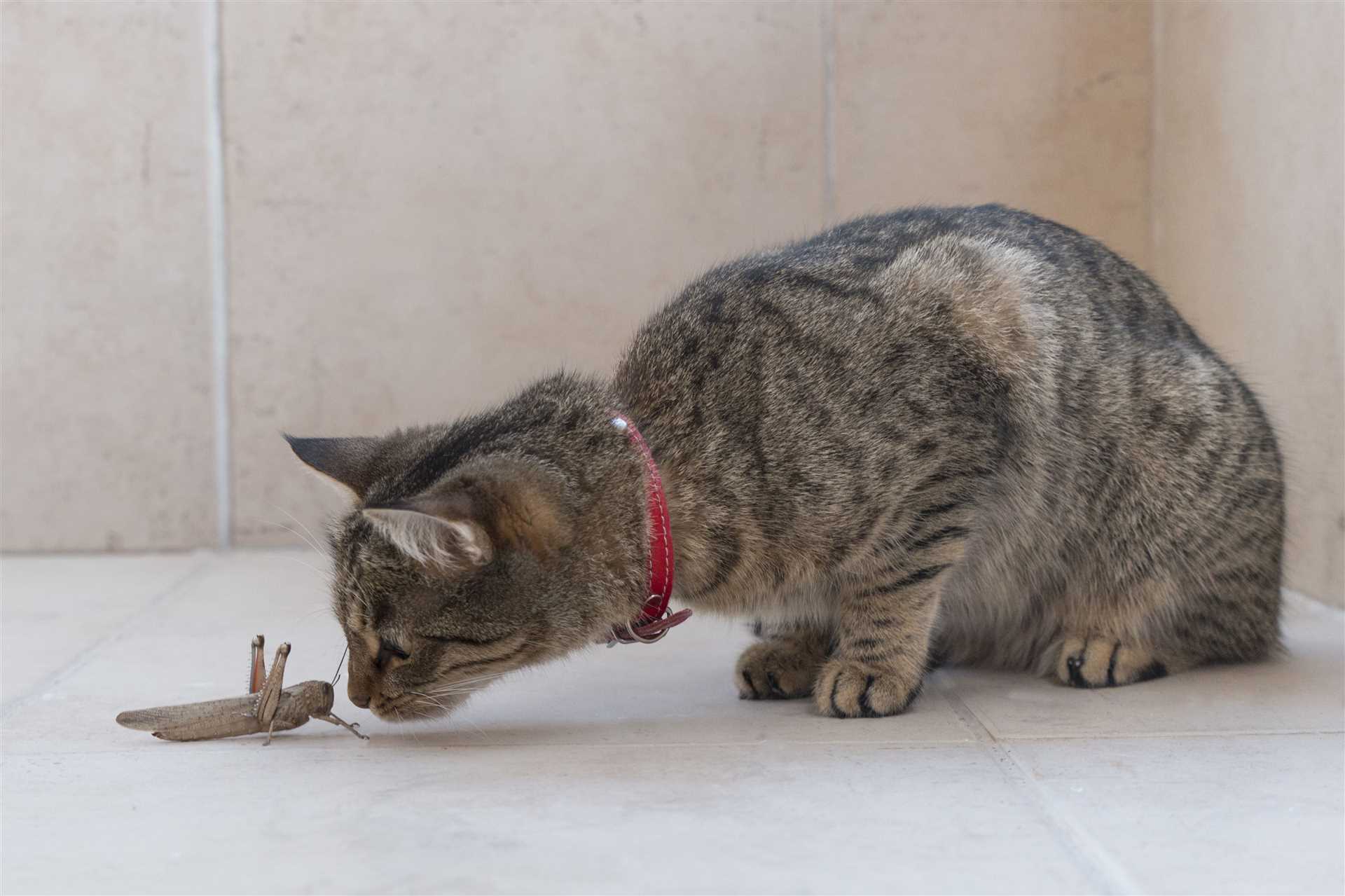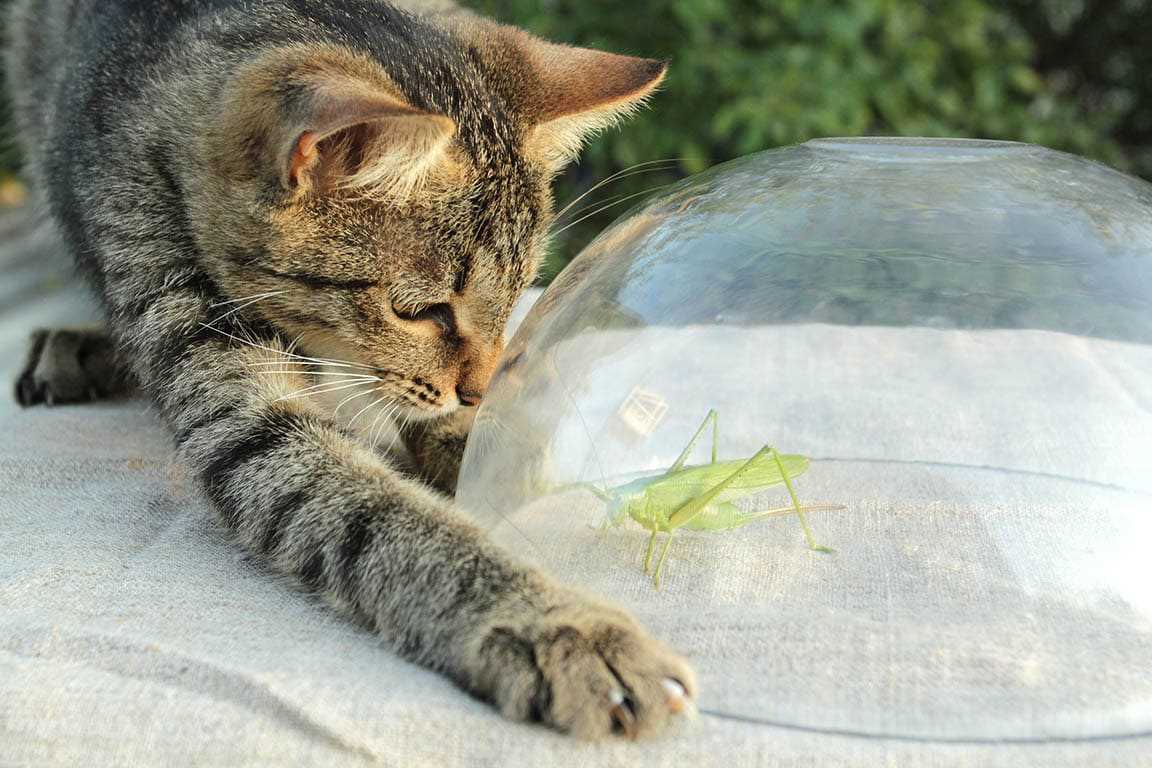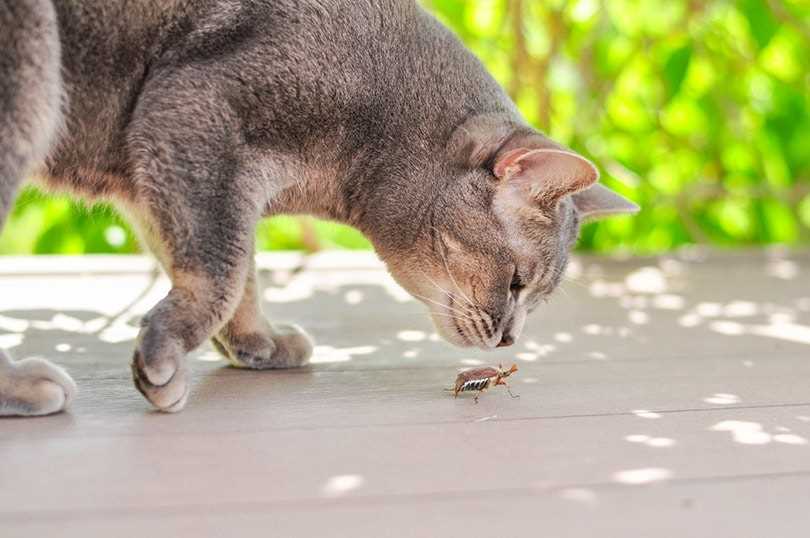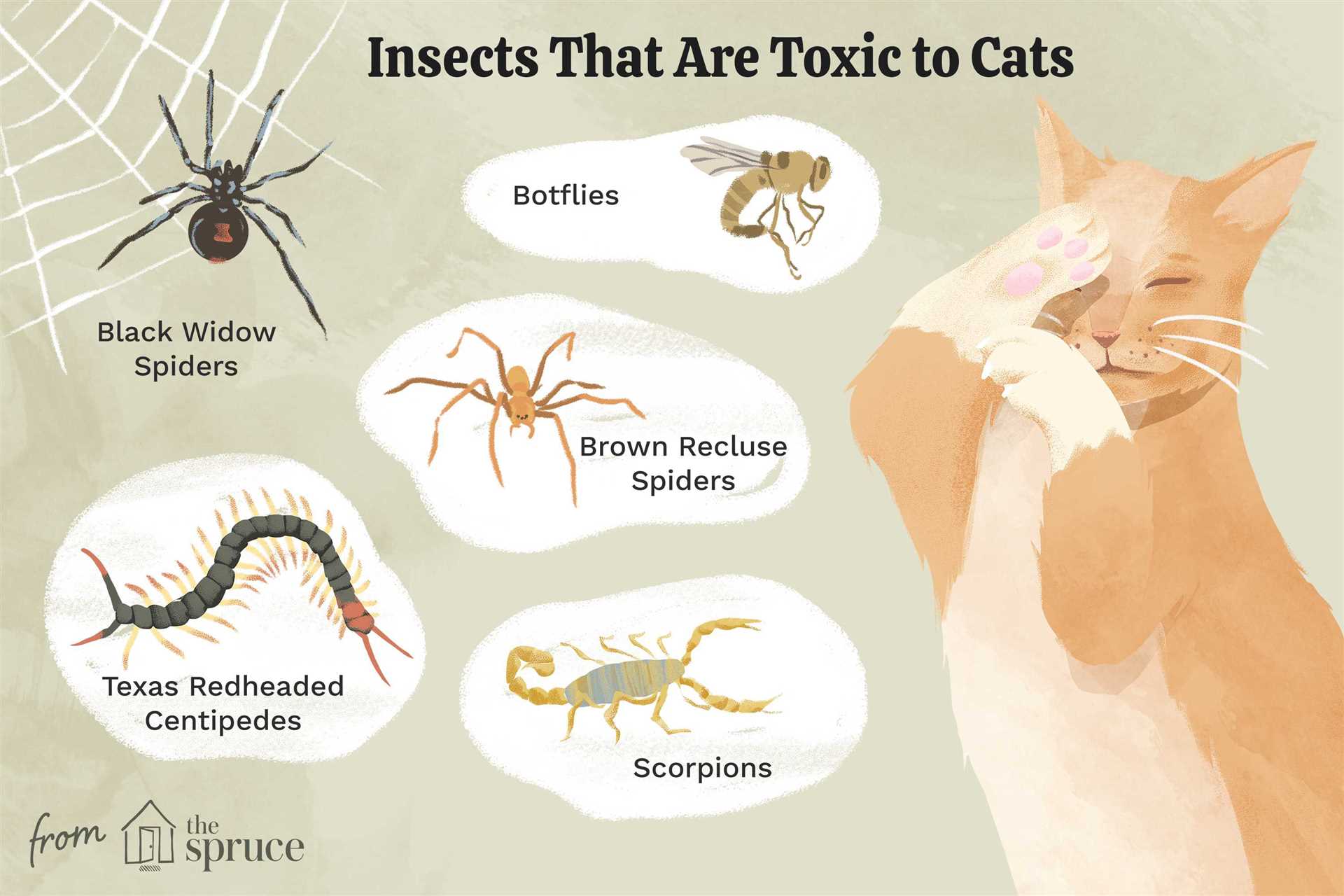



As a Scottish Fold with a curious nature, I find the thrill of pursuing tiny critters incredibly exciting. The fluttering of wings or the quick scurry of legs captures my attention and ignites my playful instincts. This behavior is not just for amusement; it reflects my hunting heritage, a trait inherited from my ancestors.
Engaging with these little creatures provides both mental and physical stimulation. The pounce, the chase, and the eventual catch help me stay agile and alert. Not to mention, the occasional crunch offers a unique taste experience, rich in protein and other nutrients that contribute to my overall well-being.
Sometimes, my human wonders about this habit, questioning if I’m missing something in my regular meals. In reality, it’s a natural inclination, a delightful way to exercise my skills while satisfying my instincts. So, if you spot me in action, just know that I’m embracing my feline nature in the most entertaining way possible!
Why I Snack on Insects

Insects are part of my natural diet, providing me with protein and essential nutrients. My instincts drive me to hunt them, mimicking behaviors of my wild ancestors. This activity keeps my mind sharp and is a fun way to stay active.
Curiosity and Play

Chasing and pouncing on these little creatures is thrilling! The movement captures my attention, triggering my predatory instincts. It’s not just about eating; it’s also about the chase, which helps me stay agile and engaged.
Exploring New Flavors

Trying different insects offers a variety of tastes and textures. This variety can be stimulating and encourages me to explore beyond my usual food. As a discerning eater, I enjoy the occasional crunchy snack!
Understanding Your Feline’s Natural Hunting Instincts
When I stalk a tiny creature, it’s not just playtime; it’s my instinct kicking in. My ancestors were wild hunters, and those skills remain strong in me. This behavior is a blend of curiosity and the need to exercise my natural predatory traits. Observing movement, pouncing, and capturing are all part of my daily routine, even if the target is just a bug.
Play and Exercise
Chasing insects provides physical activity and mental stimulation. Engaging in these activities helps maintain my health, especially as I age. Staying active is key, and if I catch something, it’s a bonus! Owners should consider interactive toys that mimic hunting scenarios to keep us entertained and fit. This is especially important for older companions who may need specific diets, like cat food for overweight senior cats, to support our well-being.
Natural Instincts and Environment
Creating an environment that encourages my natural behaviors is essential. Providing safe spaces to explore and observe can enhance my hunting skills. Window perches or play areas with various textures and heights can stimulate my instincts. Even if I’m a house pet, I still crave the thrill of the chase!
Common Types of Bugs I’m Attracted To
Ants are a real treat! Their movement catches my attention, and I can’t resist the chase. I love pouncing on them as they scurry around, often leaving them bewildered.
Flies are another favorite. The way they buzz and dart around is simply irresistible. I’ve developed quite the technique for catching them mid-air, and the satisfaction is unmatched.
Spiders are intriguing too. I find their webs fascinating, and their slow movements make them easy targets. It’s quite entertaining to watch them try to escape once I’ve spotted them.
Crickets make a delightful sound that draws me in. Their jumps are erratic, creating a perfect opportunity for me to practice my stealth and agility.
Beetles are a bit harder to catch, but their shiny shells pique my curiosity. I enjoy stalking them as they crawl along surfaces, waiting for the perfect moment to spring into action.
Lastly, moths fluttering around lights are mesmerizing. Their erratic flight patterns challenge my skills, making the chase an exhilarating experience.
The Nutritional Value of Bugs for Felines

For us furry friends, insects can be a surprising source of nutrients. Here’s what I’ve learned about their benefits:
- Protein: Many creepy crawlies are rich in protein, essential for muscle development and energy. A diet with insects can provide a significant protein boost.
- Healthy Fats: Certain bugs contain beneficial fats that supply energy and support skin and coat health. This keeps us looking fabulous!
- Vitamins: Bugs often have vitamins like B12, which aids in nerve function and overall well-being. They can contribute to a balanced diet.
- Minerals: Elements such as calcium and phosphorus found in insects assist in maintaining strong bones and teeth. Nutritional balance is key!
- Fiber: Some insects provide dietary fiber, which helps with digestion. A happy tummy leads to a happy me!
Incorporating insects into a diet can be beneficial, but it’s important to ensure they are safe and free from pesticides. Always consult with a human before making any changes to your meals!
Health Risks Associated with Feline Insect Consumption
Occasionally munching on creepy crawlies can lead to some unexpected health issues. Parasites are a significant concern; many insects carry worms or protozoa that can infect a furry friend. Regular deworming is advised to minimize risks.
Insecticides pose another threat. Residues from sprays and treatments can remain on bugs, and ingestion may lead to toxicity. Always ensure the hunting ground is free from harmful substances to keep your companion safe.
Some insects, like certain beetles, can cause digestive distress. Symptoms such as vomiting or diarrhea may occur after consumption. Monitoring dietary choices is essential.
Lastly, allergies can develop from repeated exposure to specific insects. If unusual reactions arise, consulting a vet is crucial. To ensure a comfortable travel experience for your furry friend, consider investing in the best airline personal item backpack for adventures together.
How to Discourage Your Feline Friend from Bug Hunting
To keep my adventurous spirit in check, here are some strategies I recommend:
1. Create a Bug-Proof Environment: Seal cracks and openings in windows and doors to prevent unwanted visitors. Installing screens can also help keep flying insects outside.
2. Use Natural Repellents: Certain scents deter insects. Citrus peels, peppermint oil, and eucalyptus can be effective. Place these around areas where bugs are frequent.
3. Engage in Playtime: Redirect that hunting instinct by providing stimulating toys. Wand toys, laser pointers, and interactive puzzles can satisfy the urge to chase without the need for real prey.
4. Provide Enrichment: Set up climbing structures and scratching posts to keep me entertained. A well-stimulated mind is less likely to seek out insects for entertainment.
5. Limit Outdoor Access: If possible, keep my exploration confined indoors. Consider leash training for supervised outings or use a catio for safe outdoor time.
6. Maintain a Clean Space: Regularly clean areas where bugs might congregate. Dispose of food scraps and keep surfaces free of crumbs to reduce the attraction.
7. Monitor Health: Regular vet check-ups can ensure I’m healthy and less likely to seek out unusual snacks. If I’m munching on bugs excessively, a check on my diet might be necessary.
| Method | Description |
|---|---|
| Bug-Proof Environment | Seal entrances and use screens to block insects. |
| Natural Repellents | Utilize scents that repel bugs, like citrus or peppermint. |
| Engaging Playtime | Use toys to redirect the hunting instinct. |
| Providing Enrichment | Install climbing structures and scratching posts. |
| Limiting Outdoor Access | Consider outdoor supervision or use a catio. |
| Maintaining Clean Space | Regular cleaning to minimize bug attraction. |
| Monitor Health | Frequent vet visits to ensure optimal health. |
Implementing these tips can help keep my bug-hunting days to a minimum, allowing for more play and less pest chasing!
When to Consult a Veterinarian About Bug Consumption
If I notice unusual behavior or health changes after munching on creepy crawlies, it’s time to seek professional advice. Here are some signs to watch for:
- Vomiting or diarrhea following a snack of insects.
- Persistent lethargy or lack of energy.
- Changes in appetite, either increased or decreased.
- Signs of distress, such as excessive grooming or meowing.
- Any visible discomfort or pain, like flinching when touched.
In addition, if my human finds me gnawing on insects that could be toxic or harmful, such as spiders or certain beetles, a veterinary visit is crucial. It’s better to be safe than sorry, especially with the potential for parasites or toxins.
Regular check-ups are also a good idea to ensure overall health and to discuss any dietary concerns related to my adventurous snacking habits. Keeping a record of what I’ve consumed can help the vet provide better guidance.
After all, staying healthy is key to enjoying my bug-hunting escapades!










